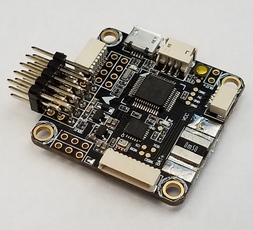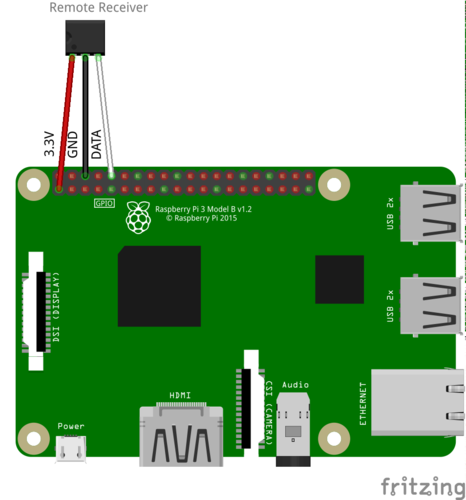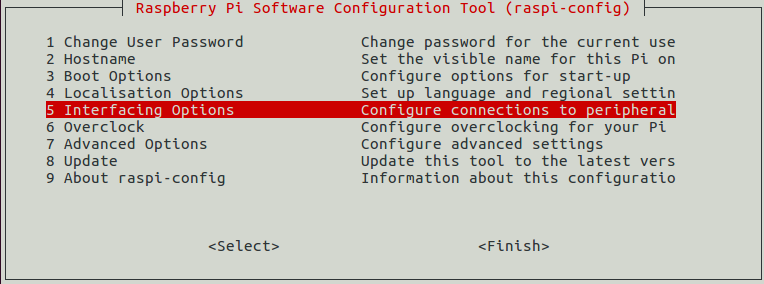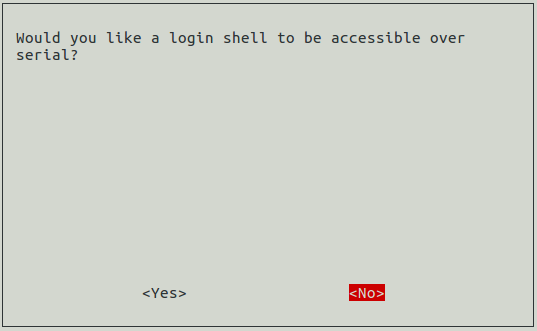This tutorial demonstrates interfacing a radio transmitter and receiver with a Raspberry Pi over the Spektrum remote receiver (aka Spektrum Satellite) protocol.
- A radio transmitter: I used the Spektrum DX6 transmitter but others should work too
- A radio receiver: I used a Spektrum AR7700 and a Spektrum DSMX remote receiver (came with the AR7700), but you only need one that is compatible with your transmitter and has a Spektrum remote receiver protocol output. I assume that your transmitter and receiver have already been bound. Instructions for binding transmitters and receivers should be found with the manufacturer.
Example receivers capable of communicating over the remote receiver serial protocol: AR7700 (left) and DSMX remote receiver(right)
- A Raspberry Pi: I used a Raspberry Pi 3 with Raspbian Stretch installed. It may actually be easier to interface with older Raspberry Pis and OS distributions because of how Raspberry Pi's now handle their UART ports.
- (optional) A flight control board: If you want to send rc signals to a flight control board capable of handling the remote receiver protocol. I used an Omnibus F3 Pro. Configuring flight control boards is beyond the scope of this tutorial.
- Connect the receiver's ground to the Raspberry Pi ground.
- Connect the receiver's power to the appropriate Raspberry Pi power pin. For example, the AR7700, connect the Raspberry Pi's 5V output to the AR7700 5V rail, and for the Spektrum Remote Receiver unit, connect the Raspberry Pi's 3.3V output to the receiver's 3.3V line)
- Connect the receiver's signal line to the Raspberry Pi RXD UART GPIO pin (GPIO 15 / pin 10 on the Raspberry Pi 3). Beware that the Pi's GPIO pins operate at 3.3V, so if your receiver outputs a 5V signal, you'll want a level-shifter to avoid ruining the Pi's GPIOs.
Diagram of a remote receiver connected to the Raspberry Pi. Note whether your receiver uses 3.3V or 5V input power.
- (optional) Connect the Raspberry Pi's TXD UART GPIO pin (GPIO 14 / pin 8 on the Raspberry Pi 3) to the flight control board if you would like to forward the data from the receiver to the Raspberry Pi to the flight control board.
Picture of the receiver unit (foreground, right) and the optional flight control board (foreground, left) connected to the Raspberry Pi.
We need to setup the software environment and the serial port before running the code.
- Python 2.7
- Python pip - Install with
sudo apt install python-pip - pySerial - Install with
sudo pip install pyserial - A clone of this tutorial repo
The serial communication will use the UART pins on the Raspberry Pi 3 and have
a rather complicated setup as documented
here
and nicely blogged about
here.
There are two UART ports: a hardware UART port and a "mini" UART port which are
accessed at /dev/ttyAMA0 and /dev/ttyS0, respectively.
There are a some defaults that confound our use of GPIOs 15 and 14 for serial communication with the receiver:
- By default, GPIOs 15 and 14 are connected to the mini UART at
/dev/ttyS0because the bluetooth module is using the hardware UART at/dev/ttyAMA0. Unfortunately, the mini UART is flakier than the hardware UART, so we'd like to connect GPIOs 15 and 14 to hardware UART at/dev/ttyAMA0. To do so, we need to either swap the port used by bluetooth or disable bluetooth.- To swap the UART port used by the bluetooth module, add
dtoverlay=pi3-miniuart-btto the Pi's/boot/config.txt - To disable the bluetooth module entirely, add
dtoverlay=pi3-disable-btto the Pi's/boot/config.txt(recommended)
- To swap the UART port used by the bluetooth module, add
- By default, the Raspberry Pi uses the non-bluetooth serial port to provide
a serial console. We need to disable the console to allow the port to be used
for our serial communication with the receiver. To do so, run
sudo raspi-configand then
Select Interfacing Options
Select P6 Serial
Disable the login shell over serial
Enable the serial port hardware
Power on the transmitter and run python main.py from within the cloned repo
on the Raspberry Pi. The code should output the values received from the
transmitter.
Try toggling the transmitter power and seeing that the signals received stop and start with the transmitter power. Don't forget to peruse the code to see the gory details about the protocol implementation. Spektrum documents the remote receiver protocol here
(optional) If you connected the UART TXD (GPIO 14 / pin 14) to a flight control board set up to receive data according to the remote receiver protocol, you'll be able to also view the RC signals in, for example, Betaflight.
I wanted to put a Raspberry Pi on a quadcopter and use it for some of the quadcopter's control, so I needed to find a way to connect the Pi to the radio receiver used to receive control signals from the transmitter on the ground. Honestly, it's a mess out there with radio receivers. There are a lot of receivers out there with all sorts of available output options. Figuring out which receiver and protocol to use could eat up a lot of time.
I started with a receiver (the Spektrum AR610) onhand that output pulse-width modulated (PWM) signals. I found that it is possible to read PWM signals using the Raspberry Pi's GPIO pins and interrupts even though the Pi does not run a real-time operating system because the PWM signals output by the receiver were slow enough that the timing of the OS didn't significantly affect the signal measurements. Still, PWM signals are product of the days of DC motors and servos and not great for interfacing with a Raspberry Pi:
- Each channel requires its own wire and pin, so your build becomes a rat's nest quickly. More wires and pins = more opportunities for circuit shorts and opens.
- You'll always wonder whether the OS is going to hiccup and skew a pulse-width measurement during flight and cause your build to crash...
The first issue was the biggest issue in my mind since I had to maintain the quadcopter build (i.e. make sure all of the wires went to the right places and stayed there on a platform subject to crashes and lots of vibrations. oy.). To move on from PWM, I obtained an AR7700, which had a nice set of output options (pulse position modulation (PPM), remote receiver output (Remote RX), and bidirectional serial receiver link (SRXL)), each of which used a single wire to communicate all of the channel data. PPM posed the same kind of problem of measuring pulse timing as PWM and so was eliminated as a good option. Remote receiver was selected because it was a proper digital, serial protocol and used by the remote receiver units, which are much smaller than the AR7700 and so attractive for use on quadcopters.
Raise an issue or drop me a message.










